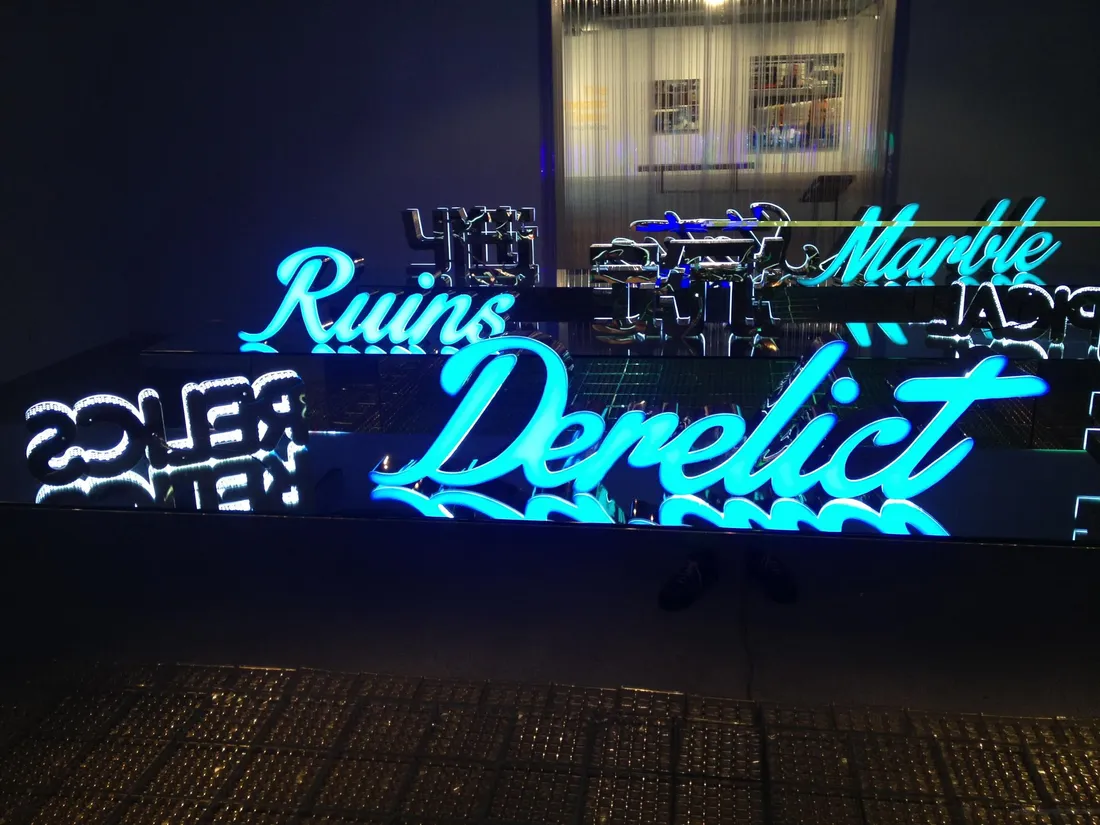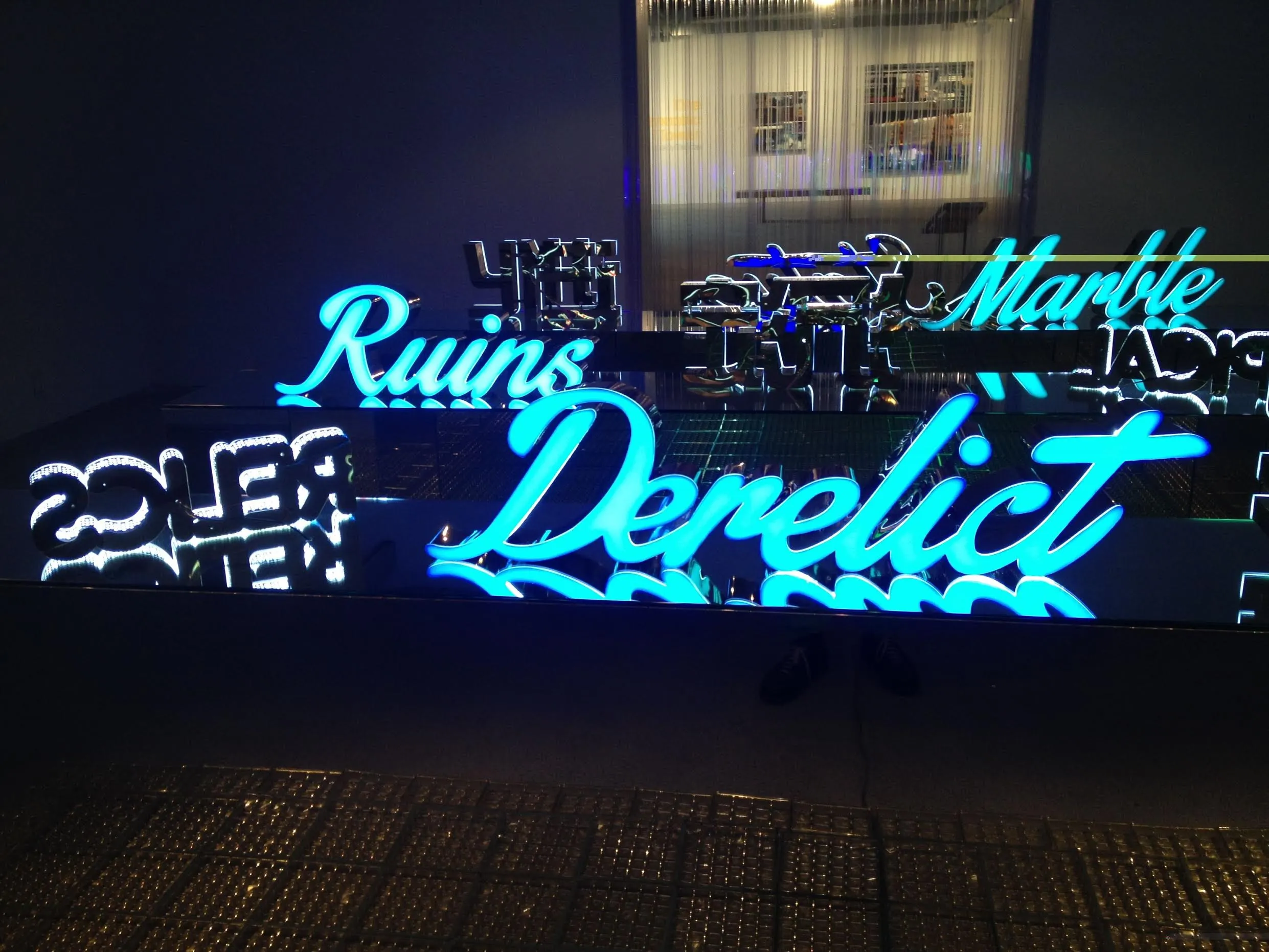Personality Crisis
Written by


News came last week that Hamilton City Council is planning to rebrand Waikato Museum. This could see them drop the word ‘Museum’ from the title because “it doesn't capture the diversity of the venue's collections or the role it plays in the arts community”. I’m not sure there’s a better word in the English language that expresses that sentiment. Not so long ago in the Hutt the Dowse rebranded itself ‘The New Dowse’. It wasn’t long before it acknowledged its history and reverted to Dowse Art Museum
The news coincided with the arrival of a publication, care of Blue Oyster Project Space in Dunedin that touches on Hamilton City’s identity crisis, and an aborted public art programme in 2015, Speaking Places, curated by Kim Paton (now Director at Objectspace). Speaking Places wanted to explore alternatives and histories for how a location like Hamilton might be expressed in language, visual and written. It seems the planned programme asked too many questions about the city’s branding for the authorities liking. This absorbing read (available at Blue Oyster, The Physics Room Christchurch and Enjoy Gallery Wellington) is the work of Ella Sutherland and Matthew Galloway (whose show at Blue Oyster has just opened).
What was Hamilton thinking when it let a retail store run a competition in 1978 to choose a brand name for the city and, of the 8000 suggestions, the judges chose ‘Fountain City’? Perhaps we will ask the same of the flag referendum process shortly.
At the time Hamilton didn’t have a fountain of note. It created one, now lying dormant due to water shortages. Meanwhile the majestic Waikato River continues to roll through the centre of town, the city - like so many others -turning its back to its river’s symbolic potential. Speaking Places is a considered look at the mediocrity that ensues when processes get popularised and bureaucratised.
 'The Emporer’s New Mall’ - Kerry Ann Lee, Shop Frontin’, Porirua
'The Emporer’s New Mall’ - Kerry Ann Lee, Shop Frontin’, Porirua
I was struck by another project considering the civic language of place this week, in Porirua’s Cobham Court, ‘The Emporer’s New Mall’ by Kerry Ann Lee. The installation is part of the Shop Frontin’ series initiated by Pataka Museum that has taken over several window spaces near the artist run space Toi Wahine, following in the wake of an Urban Dream Brokerage pilot the organisation I co-run Letting Space ran in 2015.
Lee has taken over the windows of a long empty prominent space that still carries the logo ‘Moneysaver’ up large above its doors. Adopting the sign’s typeface her series of posters slyly, cleverly mix historical advertisements for the Porirua city centre, town planning documents and its people’s activities with slogans like ‘Work hard’ and the image of an egg falling before a brick wall (a la Humpty Dumpty). Advertised house prices of $30,000 are a conversation starter, as is the appearance of a wedding announcement, which a man proudly identified to me and anyone else passing as being his sister’s.
The work is full of memories with which locals passionately identify, interrupting the barrage of shopfronts offering bargain basement deals, fast food and money lending services. There’s nostalgia, but the work is smart ironic to what the past offers the future in terms of community identity beyond marketing slogans. Rather than talking down to the public, it recognises they’re smarter than they’re sometimes treated.
The phrase ‘Better than you expect’ frames an aerial view of the new shopping centre. ‘Porirua City of Tomorrow’ is accompanied by an ‘As Seen On TV’ badge, next to a stork carrying a baby in a nappy in its beak. ‘What can’t you buy?’ asks a poster with an empty shopping basket. The headline ‘Centre now is a focal point of city life’ is also a statement asking a question. With a dash of American artist Barbara Kruger, this is pop art turned political. And amongst it all a newspaper article about Cobham Court titled ‘Fountain obsolete?’
Relic to Ruin
 Shopping and Other Rituals - Jade Townsend, Pataka. Photo / Mark Amery
Shopping and Other Rituals - Jade Townsend, Pataka. Photo / Mark Amery
Over at Pataka proper I was similarly impressed by Jade Townsend’s installation Shopping and Other Rituals. Entering a darkened space, Townsend’s small glowing text light works recall brand logos in a shopping centre. They glow like luxury handbags atop mirrored plinths, the ground around them a carpet of glinting gold empty chocolate box inners, sourced from the late Kirkcaldie and Staines. All that glitters is not, clearly, and Kerry Ann Lee’s title could have easily been hers.
The curvy electric sculptural charge of Townsend’s individual works (like gleaming hot rods) and their dynamic placement really impress. Reading this night-time city block of messages as oblique poetry there’s a real potency. They range from ‘Statue’ ‘Ruin’ ‘Relic’ and Marble’ to Chinese characters that tell of the works origin on a Beijing residency, but equally speak to a large section of the Wellington community.
Townsend’s work is joined by exhibitions by Robert Jahnke and George Nuku in using light to deepen meaning exquisitely. With the work of Kelcy Taratoa and a fascinating group exhibition of politically charged video work by artists from the Arabian Southern Mediterranean this is a suite of exhibitions that augurs well for new Pataka director Reuben Friend’s tenure.
Suburbia Shaping the Centre
 ‘I sold my heart to the junkman’ Kerry Ann Lee, installation, Suburban Dreams, Dowse Art Museum
‘I sold my heart to the junkman’ Kerry Ann Lee, installation, Suburban Dreams, Dowse Art Museum
Over in the Hutt at the Dowse Suburban Dreams curated by Sian Van Dyke is great viewing but for me also feels like a lost opportunity. Like a standard group show reaching towards something more grounded in social issues.
‘The focal point’ of city life since World War Two has in fact been the suburb not the city centre, and it deserves a thorough appraisal in the way it has shaped us - in the Hutt as much as Hamilton or Porirua. Particularly at a time when the suburban dream is now unaffordable to most.
Suburban Dreams brings together excellent work by contemporary New Zealand artists on the theme, but is a little polite. I missed a more in-depth less wide-ranging investigative approach that grabbles with the socio-political concerns and what suburbs mean to us now. The intention for complexity is there: Van Dyke intelligently stating in an interview with Te Papa’s Sarah Farrar her interest in exploring the benefits of suburbia in terms of allowing for freedom of expression, but the weight of that is carried by two strong commissioned works.
Kerry Ann Lee is there again, with ‘I sold my heart to the junkman’ a clever piece of aerial ballet with cutout photographic prints as mobile, referencing icons from her mixed-heritage Wellington suburban youth. The icons that shaped her individual identity in the burbs are put in a spin, dreams given flight.
Collaborating with four Wainuiomata teenagers Tim Barlow’s ‘Nui’ mixes documentary and fiction to explore the town for its young now. A film of the teenagers looking for one of their missing friends is shown alongside four individual soundtracks you can listen to - audio commentary by the four on their relationship to ‘the Nui’ act like alternate DVD Director’s commentaries.
‘Nui’ is a thoughtful, rather beautiful exploration of how best to work with people, rather than play documentary voyeur. I was reminded of John Lake’s photographic series for the Dowse Crude Futures in 2009 and his ‘Dirt Gang’ at Enjoy in 2008, but film and audio allows Barlow to find new ways for the subjects to own the work. Lake also appears in Suburban Dreams.
Presented is a bush-cradled suburb where solace is found in the scrappy derelict in-between spaces. These speak of both civic failed promises and the need for the young to find their own wild spaces in which to create their own language.
The suburbs have framed our sense of civic identity but left a hole where fountains and busy shopping strips used to be. Barlow and Lee’s works suggests that if you want to go about creating a sense of identity for these places we have built now, allowing the young to make that space their own is a key first step.
- Suburban Dreams, Dowse Art Museum, Lower Hutt, until 29 May 2016
- Shopping and Other Rituals, Jade Townsend, Pataka Museum, Porirua, until 15 May 2016